Occupation Author, translator Name Kafu Nagai | Nationality Japanese Role Author Literary movement Aestheticism | |
 | ||
Born Nagai SokichiDecember 3, 1879Tokyo, Japan ( 1879-12-03 ) Subject French literature, Japanese-Edo literature Movies The Strange Story of Oyuki, Bungo: Sasayaka na yokubo Books Geisha in Rivalry, During the rains & Flowers i, Something Strange Across th, Sigane vroche, Rivalry: A Geisha\'s Tale Similar People Jun\'ichiro Tanizaki, Kaneto Shindo, Saburo Kawamoto, Kyoka Izumi, Soseki Natsume | ||
朗読 永井荷風 「すみだ川」第2回 Nagai Kafu
Kafū Nagai (永井 荷風, Nagai Kafū, 3 December 1879 – 30 April 1959) was the pseudonym of the Japanese author, playwright, essayist, and diarist Nagai Sōkichi (永井 壮吉). His works are noted for their depictions of life in early 20th-century Tokyo, especially among geisha, prostitutes, cabaret dancers, and other denizens of the city's lively entertainment districts.
Contents
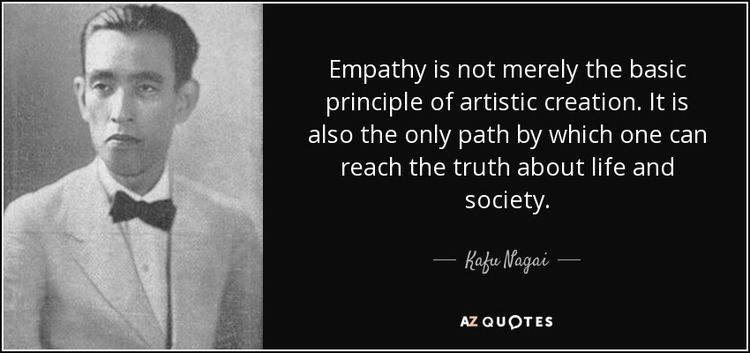
朗読 永井荷風 「すみだ川」第1回<全10回> Nagai Kafu
Biography
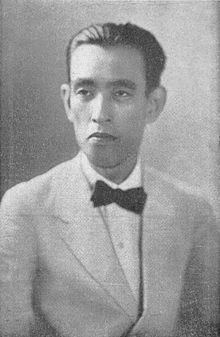
Kafū was born at Kanetomi-chō 45, Koishikawa-ku (now Kasuga-chō, Bunkyō, Tokyo), the eldest son of Nagai Kyūichirō (永井 久一郎), his father, who was 28 years old, and Nagai Tsune (永井 恆), 19. Kyūichirō was a scholar, bureaucrat, and businessman who later became known for his Chinese poetry. Kafū had three brothers and one sister. When the second son was born in 1883, Kafū was sent to live with his mother's family. In 1884, he attended the kindergarten affiliated with the Ochanomizu women's teachers' college, and his father visited Europe on government business. Kafū returned to his parents' home in January 1886, when he started elementary school.
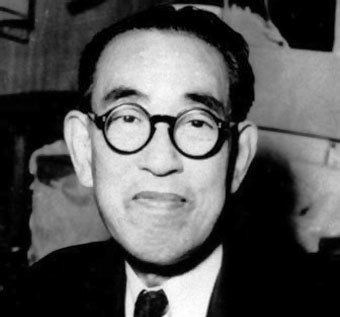
In 1891, he attended a private English-language school in Kanda, Tokyo. In 1894, he became ill, perhaps with scrofula, and spent several months in 1895 in a hospital in Odawara. He began studying the shakuhachi and Chinese poetry in 1896 at the age of 17. In February of the following year, he made his first of many visits to the Yoshiwara red-light district. The same year, he graduated from middle school and failed the entrance exam for university. With his mother and younger brothers, he visited Shanghai, where his father was working for the shipping company Nippon Yusen. He returned to Japan in the autumn and enrolled in the Chinese-language department of the institutions for foreign-language educations affiliated with the Higher Commercial School.
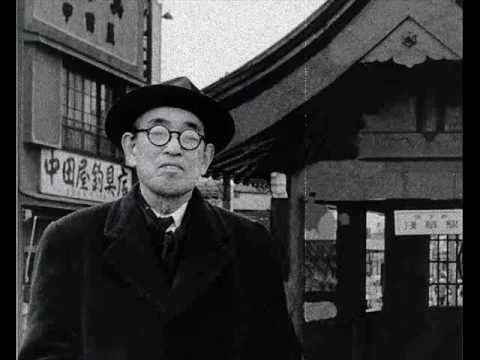
In 1898, he began writing short stories and studied with the novelist Hirotsu Ryūrō (広津 柳浪). In 1899 he became involved in writing and performing rakugo and dropped out of the foreign-language school. In 1900, he began publishing short stories. In 1901, he got a job briefly as a newspaper reporter and later began studying French.
The following timeline is based on notes that he appended to the 11th handwritten volume of Danchōtei Nichijō:
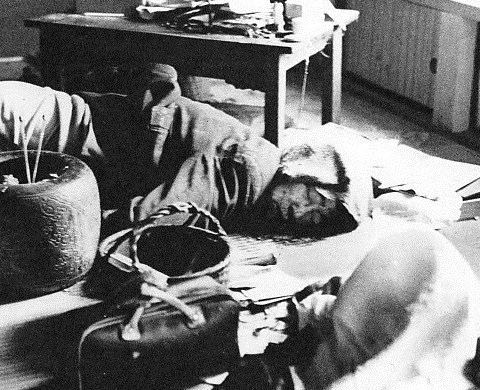
During World War II, the amount of Japanese literature published was limited due to extreme censorship by the government, which sought to encourage artists and writers to direct their focus toward the war effort. Nagai Kafu became one of the rebels who opposed the government and continued to write. As a result, he was able to maintain his status as a popular novelist throughout the war. After the war, many Japanese authors were emotionally and psychologically affected, and the aftereffects began to show in narratives, poems and essays related to death, disease, despair and defeat. However, since Nagai Kafu did not contribute to the war effort, he was not influenced as heavily by the defeat and continued to write about the things he loved in life, notably geisha, prostitutes and dancers, until his death, on April 30, 1959, from a gastric ulcer.
The edition of his collected works published by Iwanami Shoten in the 1990s runs to 30 volumes.
Writing style
Nagai's writing style varied depending on his genre and audience. Reflecting his study of classical Chinese and his wide reading of premodern Japanese texts, his diaries and some of his essays are written in the highly literary bungo (文語) style. Most of his plays and novels, in contrast, are written in a modern style typical of the era in which he wrote, and the dialogue spoken by his characters seems particularly natural and unaffected.
Major works
Among Nagai's major works are:
